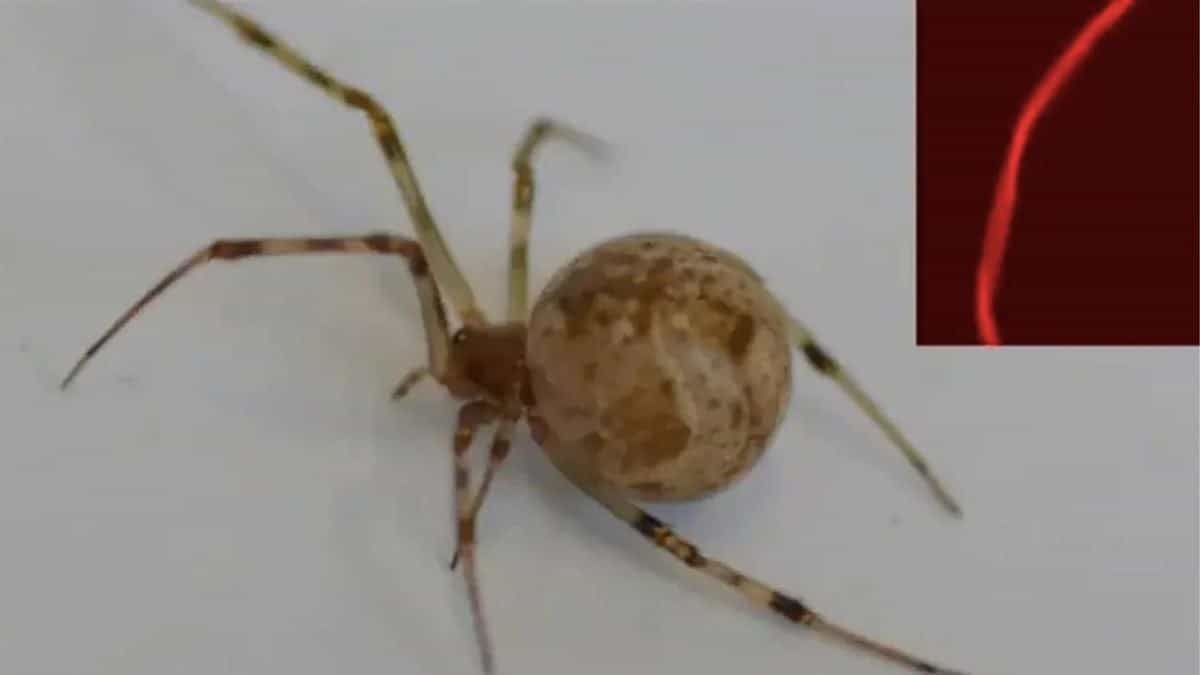Show table of content Hide table of content
In a groundbreaking scientific achievement, researchers in Germany have successfully created the world’s first genetically modified spider capable of producing fluorescent red silk. This remarkable breakthrough, published in the scientific journal Angewandte Chemie in May 2025, represents a significant advancement in both arachnid genomics and materials science. The modified spiders produce silk that glows bright red under ultraviolet light, demonstrating the successful integration of foreign genetic material into the spider’s genome.
Revolutionary genetic modification of arachnids
Scientists have long attempted to genetically modify spiders, but these eight-legged creatures have proven notoriously difficult to work with in laboratory settings. Unlike other insects that have been successfully modified, spiders present unique challenges due to their complex behaviors and reproductive systems. The breakthrough came with the selection of Parasteatoda tepidariorum, a common house spider species that has emerged as a more cooperative research subject.
Using the Nobel Prize-winning CRISPR-Cas9 gene editing technology, researchers injected a gene coding for a red fluorescent protein into unfertilized spider eggs. This precise genetic modification technique allows scientists to target specific DNA sequences with unprecedented accuracy. “We have demonstrated, for the first time worldwide, that CRISPR-Cas9 can be used to incorporate a desired sequence into spider silk proteins,” explained the lead researcher from the German laboratory.
The genetic modification successfully passed to offspring, creating a lineage of spiders capable of producing the distinctive red fluorescent silk. This achievement opens numerous possibilities for future modifications that could enhance spider silk’s already impressive properties. Such advances might seem like science fiction, reminiscent of extraordinary survival stories in nature, yet they represent tangible scientific progress.
Spider silk: nature’s extraordinary material
Spider silk has fascinated scientists and engineers for decades due to its remarkable properties. This natural fiber is five times stronger than steel cable of equivalent weight, while remaining lightweight, highly elastic, and biodegradable. These exceptional characteristics make spider silk one of nature’s most extraordinary materials with vast potential for human applications.
The ability to genetically modify spider silk opens unprecedented possibilities for enhancing these already impressive properties. Researchers can potentially incorporate new amino acid sequences to make the silk even stronger, more flexible, or resistant to specific environmental conditions. Additionally, functional modifications could add entirely new properties, such as antimicrobial capabilities for medical applications or electrical conductivity for technological uses.
The fluorescent property demonstrated in this research serves as a visual confirmation of successful genetic modification, but also suggests potential applications in biomedical imaging or for creating tracking mechanisms visible under specific light conditions. This achievement represents just the beginning of what could become an entirely new field of engineered biomaterials.
Applications and future prospects of modified silk
The successful genetic modification of spider silk opens doors to numerous practical applications across various industries. In medicine, modified silk could create biodegradable sutures with antimicrobial properties or scaffolds for tissue engineering. The material’s biocompatibility makes it ideal for implantable medical devices or drug delivery systems.
In the textile industry, engineered spider silk might lead to ultra-lightweight, extremely durable fabrics with specialized properties like water resistance or temperature regulation. The sustainability aspect of this biodegradable material addresses growing environmental concerns about synthetic fibers. Imagine clothing that combines the durability of synthetic materials with the comfort and biodegradability of natural fibers.
The technology sector represents another promising frontier for modified spider silk. Researchers envision applications in flexible electronics, sensors, and high-performance components. The material’s strength-to-weight ratio makes it appealing for aerospace applications, where every gram matters. This research demonstrates humans’ growing ability to work with nature’s designs, much like how conservation efforts protect remarkable natural creatures.
Overcoming challenges in arachnid genetic modification
The successful genetic modification of spiders represents the culmination of years of persistent research overcoming significant technical challenges. Previous genetic modification attempts with spiders often failed due to their cannibalistic tendencies, complex development, and specific environmental requirements. The breakthrough with Parasteatoda tepidariorum demonstrates how selecting the right model organism can be crucial for scientific advancement.
Science This strange red lake in Tanzania turns animals to ‘stone’.
CRISPR-Cas9 technology proved essential for this achievement, allowing precise genetic modifications that previous techniques couldn’t accomplish. While scientists have previously created genetically modified mosquitoes resistant to malaria and wasps with red eyes for visualization studies, modifying spiders presented unique challenges requiring innovative approaches. This success builds on years of incremental progress in understanding spider biology and genetics.
The ethical implications of creating genetically modified organisms always merit careful consideration. Scientists must balance potential benefits against unforeseen consequences, especially when modifying creatures that could theoretically reproduce in natural environments. Proper containment protocols and risk assessments remain essential components of responsible research, similar to how humans must protect vulnerable species while advancing scientific knowledge.
The fluorescent spider silk research demonstrates how persistent scientific study and inquiry can overcome seemingly insurmountable challenges. This breakthrough required not only technical expertise but also creativity and determination from researchers who refused to abandon their goal despite numerous setbacks. Their success story offers inspiration beyond scientific circles, showing how persistence can lead to extraordinary achievements, much like when ordinary individuals perform remarkable feats through determination.


